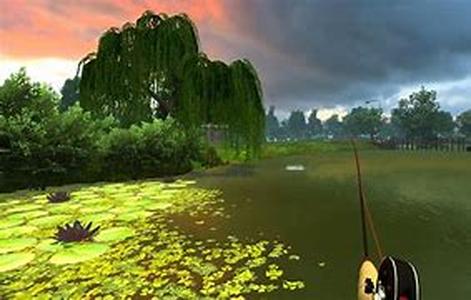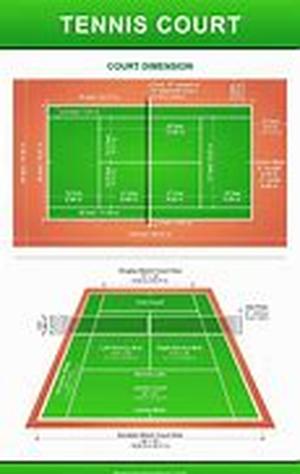
? Size And Space A Standard Size Tennis Court For Doubles Play, Measure 60 Feet By 120 Feet From Fence To Fence. For A Series Of Two Or More Courts, A Minimum Of 48 Feet In Additional Width Is Allowed For Each Extra Court. Total Cleared Space Varies Depending Upon The Place Landscape, Perimeter Drainage Needs, And So On. You Will Need A Minimum Of 5 Feet Around The Boundary And Additional Space Stipulation Is Needed For Special Drains, Elaborate Landscapes And Patios. More Clearing Is Required For Steeply Sloped Site To Allow For Natural Sloping Around The Court. Courts Can Be Smaller In Dimensions, But Since The Standard Playing Lines For Doubles Are Always 36 Feet By 78 Feet, It Would Not Be Advisable To Under Size Your Courts As They May Compromise Safety And Quality Of Play.? OrientationPreferably A Tennis Court Should Be Situated In A True North-south Direction.? Perimeter Sloping And DrainageDifferent Perimeter Sloping And Drainage Is Built For A Court That Is Built On The Side Of A Hill Than On A Flat Open Area. A Variety Of Techniques Are Used To Redirect Water From Washing On Top Of Or Under A Court, It Ranges From Natural Swales To Elaborate Underground Systems, Sometimes Retaining Walls Are Required With Drainage Provisions Behind The Wall. All Of These Affect The Size And Space Requirements Of Tennis Court Construction.? FencingA Standard Fence Is 10 Feet High, But 8 Feet Or 12 Feet May Be Suitable At Times. You Have A Lot Of Options When It Comes To Fencing, The Court Can Be Fully Enclosed With A High Fence Or Sides Can Be Left Open With A Lower 3 Feet Or 4 Feet High Fence. Corners Can Be The Standard 90 Degrees Or Cut Off Slantways. For Tennis Court Construction, Support Systems Can Be Wood Which Is Either, Round Cedar Or Pressure Treated Pine, Or Steel Posts Which Are Galvanized Or Vinyl-bonded. The Fabric Can Be Vinyl-bonded Chain Link, Netting Or Chicken Wire.? PermitsLocal By Laws And Rules For Tennis Court Construction May Vary. You Have To Take In Hand The Following Issues: Building Permits And Fees, Check With The Local Building Department; Conservation Restrictions, Check With The Local Conservation Department; Utilities, A Common Agency Is Notified To Spot And Mark All Underground Lines For Gas, Electricity, Water And Sewer Before A Ground Breaking Is Done.Aside From These Basic Things That You Need To Know, You May Also Want To Check And Choose Contractors Who Can Get The Job Done For You. Make Sure That You Are Aware Of Their Company Profile, Credentials And The Services That They Can Offer You. In Tennis Court Construction Always Consider The Basics, Contractors And Cost.





